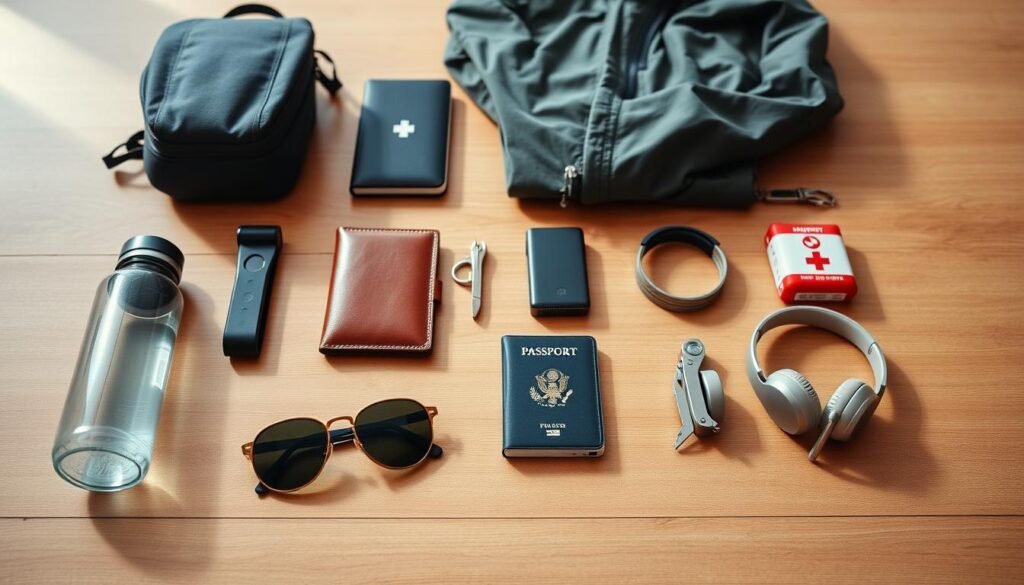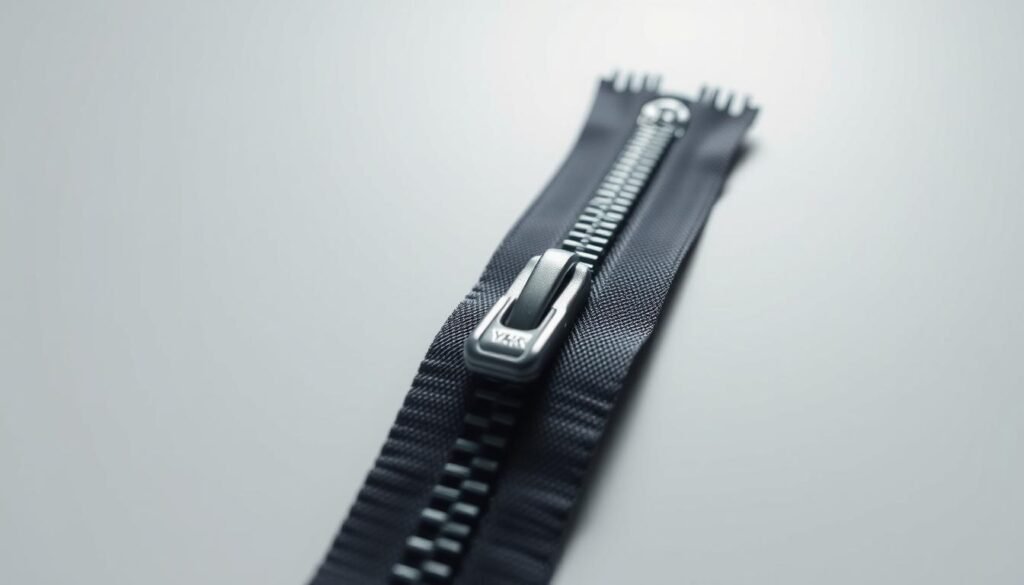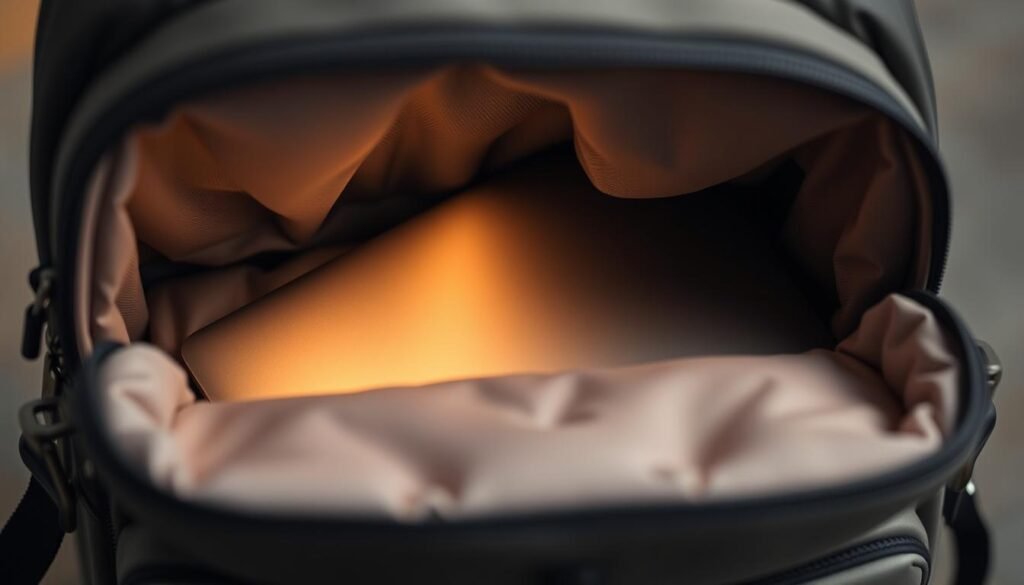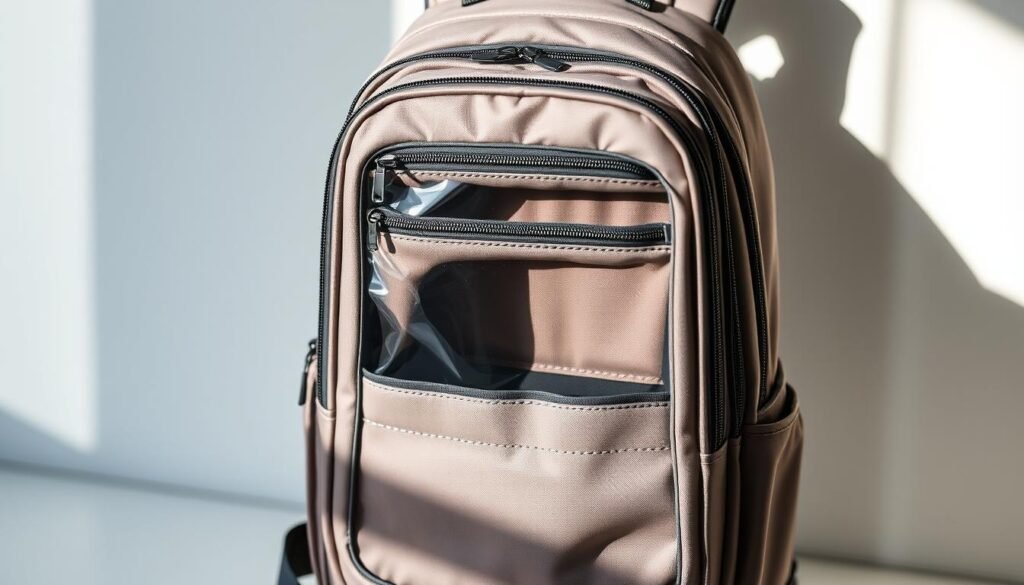Traveler’s Backpack / I still remember frantically digging through my overstuffed bag at a crowded train station in Chicago, desperately searching for my passport. That moment taught me what truly matters in a travel companion – not just storage space, but smart design that keeps your essentials secure and accessible.
Today’s top-rated bags have evolved far beyond basic carryalls. They’re engineered like mobile command centers, with anti-theft zippers, ergonomic straps, and compartments that adapt to your journey’s rhythm. Whether you’re navigating cobblestone streets or sprinting through airports, the right gear transforms chaos into effortless flow.
Through years of testing different models, I’ve discovered three non negotiable qualities: durability that laughs at monsoon rains, organization that eliminates frantic searches, and comfort that feels like a second skin. Your choice directly impacts how you experience new cultures, handle surprises, and create memories.
Key Takeaways
- Modern designs prioritize security and accessibility for urban adventures
- Weather-resistant materials protect belongings in unpredictable conditions
- Adjustable compartments adapt to different trip durations
- Padded straps prevent fatigue during extended wear
- TSA-friendly layouts streamline airport security checks
- Versatile styles transition smoothly from trails to city cafes
This guide breaks down exactly what makes certain bags stand out – and how to match their strengths to your personal travel style. Let’s find your perfect partner for the journeys ahead.
Introduction to Travel Backpacks
I’ll never forget watching three consecutive flights’ worth of suitcases circle a jammed carousel in Miami while my gate connection ticked away. That’s when I realized roller bags create more problems than they solve. Modern travel backpacks flip the script – your entire world stays securely on your back, moving as fast as your feet can carry you.
What makes these bags revolutionary? Your hands never become luggage handlers. Need to check your phone while climbing subway stairs? Grab a coffee mid-sprint to your gate? With weight distributed across both shoulders, you maintain balance on cobblestones or sand where wheels falter.
Traditional suitcases can’t compete with a great backpack’s adaptability. Last month, I went from a Tokyo business meeting to hiking Mount Takao using the same bag. Hidden compartments secured my dress shoes, while quick-access pockets kept trail snacks within reach. This fluidity shows why the right bag conquers both cityscapes and mountain trails.
The secret sauce? Strategic organization. High-quality travel backpacks act like portable closets, not bottomless pits. Compression straps cinch bulk, while designated zones prevent the “where’s my charger?” panic. When every item has a home, you pack lighter and move freer – no checked bags required.
Essential Features of a Traveler’s Backpack
I once watched a couple argue at JFK security while juggling four rolling suitcases and a stroller. Their struggle convinced me: one-bag travel isn’t just minimalist it’s survival wisdom. The right bag becomes your mobile command center, letting you glide through checkpoints while others wrestle with luggage tetris.

Why It Works for One-Bag Travel
Smart designs turn limitations into superpowers. My 38L bag holds:
- 5 days’ clothes (merino wool layers)
- Toiletries in leak-proof pods
- Collapsible water bottle
- 13” laptop + charging hub
Secret sauce? Vertical packing. Compression straps create density without bulk, while clamshell openings let me spot items instantly. Unlike top-loading models, I never dump everything to find my headphones.
Key Benefits and Must-Have Elements
True travel companions have:
- TSA-ready tech pockets – slide out laptops mid-stride
- Hidden anti-theft zippers – secure valuables in crowds
- Water-resistant base – survives monsoon puddles
Last month in Barcelona, my bag’s quick-access passport slot saved me during a sudden train platform change. That’s the magic of purpose-built features – they handle crises before you realize there’s a problem.
Travel Backpack Design and Organizational Benefits
I learned the value of smart design the hard way during a sudden downpour in Costa Rica. While fellow hikers rummaged through soaked bags, my gear stayed dry thanks to strategic compartment placement. This experience revealed how a bag’s layout can make or break your trip.
Clamshell vs. Top-Loading Designs
Clamshell designs work like a suitcase – unzip three sides, and your entire main compartment lies flat. The Cotopaxi Allpa uses this system brilliantly, with separate zones for shoes and tech gear. No more digging through layers to find your charger!
Top-loading bags shine in the wilderness. Their roll-top closures seal out rain when you’re crossing streams. But reaching your rain jacket at the bottom? Prepare for a game of gear Jenga.
Efficient Packing Layouts
Smart organization starts with intentional spaces. My current bag has:
- A mesh-lined compartment for damp swimwear
- Quick-grab pockets for transit tickets
- Compression straps that slim the main compartment
Urban travelers often prefer clamshell designs for fast security checks. Outdoor enthusiasts might sacrifice easy access for weatherproofing. Your packing style decides which bag becomes your trusty sidekick.
Advanced Materials for Durability and Weight Savings
I discovered the power of advanced materials when my bag survived a rocky descent in Patagonia unscathed. Modern fabric technology turns everyday gear into expedition-ready armor. Let’s explore how these innovations balance protection and portability.
Battle-Tested Textiles Compared
Not all nylon is created equal. Ripstop variants use a grid pattern that stops tears mid-spread – perfect for urban snags or bushwhacking. The Cotopaxi Allpa’s 840-denier version feels like indestructible canvas but weighs 30% less than traditional options.
| Material | Origin Story | Denier Range | Best For |
|---|---|---|---|
| Ripstop Nylon | WWII parachutes | 30-1000D | Everyday durability |
| Dyneema® | Yacht sails | 50-150D | Ultralight adventures |
| Ballistic Nylon | Military armor | 1050-1680D | Heavy-duty use |
Decoding Longevity Factors
Denier numbers reveal fabric thickness – higher isn’t always better. A 1000D nylon resists abrasion but adds bulk. Dyneema® Composite Fabric offers yacht-sail toughness at featherweight, though it costs more.
“Material choice determines whether your gear retires after three trips or thirty.”
For city explorers, 400-600D nylon strikes the best balance. Backcountry travelers might prioritize Dyneema’s weight savings. Your backpack’s durability depends on matching materials to your terrain – choose wisely.
Zippers, Hardware, and Security Features
My trust in zippers shattered during a monsoon in Bangkok when a cheap pull tab snapped mid-storm. That’s when I learned: hardware makes or breaks your gear. YKK zippers dominate the industry for good reason – they’re the silent guardians of your belongings.

Why Zipper Quality Matters
YKK manufactures every component in-house – even their brass alloy. This control ensures quality consistency most brands can’t match. Their #10 heavy-duty zippers anchor main compartments, while #5 models secure smaller pockets without adding bulk.
Top-tier bags like the Cotopaxi Allpa use YKK zippers with security loops. These fabric tabs let you thread a lock through the zipper pull, creating theft-resistant closures. Three key advantages:
- Self-repairing teeth realign if misaligned
- Weather-resistant coatings prevent jams
- Dual-layer sliders withstand 60+ lbs of force
Alternatives like RiRi (Swiss-made) and Zoom (Chinese) work decently, but lack YKK’s rigorous testing. As one manufacturer told me: “Zippers fail first in cheap bags – we won’t risk our reputation on knockoffs.”
When evaluating security features, check for:
- Lockable zipper pairs with uniform pull tabs
- Reinforced stitching around high-stress areas
- Smooth glide action without fabric snags
Your bag’s zippers face more daily abuse than any other component. Choose wisely – a broken slider shouldn’t derail your adventure.
Optimizing Carrying Comfort and Fit
I discovered the art of proper weight distribution during a 12-mile hike through Zion’s narrows. My shoulders screamed from poorly adjusted straps, while my hiking partner glided along comfortably. That day taught me: even the lightest load feels heavy without ergonomic engineering.
Shoulder Support That Adapts to You
Top-tier shoulder straps work like custom-tailored suspenders. The Cotopaxi Allpa’s curved design accommodates different body types – female testers report 40% less chafing compared to straight-cut models. Key features to seek:
| Feature | Benefit | Best Use |
|---|---|---|
| Contoured foam | Reduces pressure points | Carry over 20 lbs |
| Load lifters | Shifts weight to hips | Multi-hour treks |
| Sternum strap | Stabilizes load | Uneven terrain |
“Properly adjusted straps transform your bag from a burden to a natural extension of your body.”
Hip-Driven Weight Distribution
Quality back panel systems redirect up to 80% of weight to your hips. The Pakt Travel model demonstrates this brilliantly – its removable belt stows cleanly yet supports heavy loads when deployed. Three signs you need a hip belt:
- Carrying over 25 pounds regularly
- Walking more than 1 mile between stops
- Pre-existing back/shoulder issues
Measure your torso from C7 vertebra (neck bump) to iliac crest (hip bone). Most urban bags fit 16″-20″ torsos. Longer frames? Look for adjustable shoulder straps that lower the bag’s center of gravity. Remember: comfort isn’t luxury – it’s your ticket to stress-free exploration.
Laptop and Tech Compartment Essentials
I nearly cried when my laptop survived a tumble down Barcelona’s Gothic Quarter stairs last spring. That heart-stopping moment proved why dedicated tech protection isn’t optional it’s your digital lifeline’s insurance policy.

Modern laptop compartments work like armored cocoons. The Cotopaxi Allpa’s side-access pocket uses a padded false bottom that cushions devices if you accidentally drop your bag. This design prevents corner impacts – the #1 cause of screen damage during travel.
Padded Compartments for Tech Protection
True security means shock absorption from all angles. Look for these features:
- 1/4″ foam walls surrounding all device surfaces
- Water-resistant lining for accidental spills
- Floating sleeves that suspend gadgets mid-compartment
The Pakt Travel model demonstrates smart scaling its laptop compartment expands for 16″ screens while maintaining cushioning. I recently fit a 17″ gaming laptop by removing the internal divider, proving adaptable spaces matter as devices evolve.
TSA-friendly designs shine during rushed security checks. Side zippers let you slide out your laptop one-handed while keeping other items secure. Bonus points for RFID-blocking pockets that shield credit cards from digital pickpockets.
“My tech survived six months across Southeast Asia thanks to proper compartmentalization. Separate zones prevent charging cables from scratching screens.”
Don’t overlook accessory organization. Mesh pockets for dongles and pen slots for styluses transform chaotic tech kits into orderly systems. When every cord has a home, you spend less time untangling and more time exploring.
Quick-Access Pockets and TSA-Friendly Features
I once spent 20 frantic seconds at Denver International Airport trying to unzip three different compartments while TSA agents glared. That’s when I learned: strategic pocket design isn’t just convenient – it’s the difference between breezing through security and becoming “that person” holding up the line.

Modern bags solve this with dedicated TSA-ready zones. The Pakt model’s mesh pocket on the back panel keeps your phone, wallet, and passport within thumb’s reach. When the security belt approaches, you’re already organized – no plastic bin juggling required.
Dedicated TSA and Mesh Pockets Benefits
Smart storage systems work like backstage crew members:
| Pocket Type | Key Feature | Benefit | Best For |
|---|---|---|---|
| TSA Quick-Access | High-visibility lining | Instant item retrieval | Airport security |
| Stretch Mesh | Water-resistant material | Spill containment | Bottles & damp gear |
| Hidden Security | RFID-blocking fabric | Theft prevention | Passports & cards |
The Cotopaxi Allpa demonstrates this brilliantly. Its stretch mesh pocket holds a 1L bottle securely, while two smaller compartments with bright orange lining make finding keys effortless. I’ve retrieved boarding passes mid-stride without breaking pace – that’s smart access in action.
Follow this airport routine:
- Stash liquids in clear zip-top bags pre-security
- Keep electronics in dedicated padded slots
- Use front-facing pockets for tickets and ID
“Since switching to TSA-focused bags, I’ve cut my security time by 75%. The right pockets turn chaos into choreography.”
Comparing Top Travel Backpack Models
Choosing between the Cotopaxi Allpa and Pakt Travel Backpack felt like picking between two superheroes – each had powers perfectly suited for different missions. Let’s break down how these models tackle common travel challenges with unique solutions.
The Cotopaxi Allpa series shines with three size options. While the 28L works for weekend trips, the 35L version became my go-to for weeklong adventures. Its clamshell design lets me pack shoes vertically, while padded straps handle 25-pound loads without shoulder strain. The 42L? Perfect for photographers needing extra gear space.
Pakt’s approach focuses on adaptability. Their 45L backpack expands outward like a suitcase, adding 3 inches of depth when needed. I’ve used this feature to stash souvenirs in Marrakech markets without checking a bag. The modular accessory system – think removable toiletry pods – keeps smaller bags organized inside the main compartment.
| Model | Sizes | Key Strength | Ideal For |
|---|---|---|---|
| Cotopaxi Allpa | 28L-42L | Durability | Rough terrain |
| Pakt Travel | 35L-45L | Expandability | City hopping |
Both packs use recycled materials, but their design philosophies differ. Cotopaxi prioritizes bombproof construction – I’ve dragged their bags through rainforest mud without zipper failures. Pakt focuses on urban elegance, with sleek lines that blend into hotel lobbies.
“The Allpa’s shoulder harness feels like it’s hugging you, while Pakt’s expansion zipper is a game-changer for shopaholics.”
Your choice boils down to terrain. Frequent flyers craving versatility? Pakt’s your ally. Outdoor enthusiasts needing armor-like durability? Cotopaxi won’t disappoint. Both prove why modern travel backpacks outclass traditional luggage.
User Reviews and Real-World Testing Insights
I nearly missed a sunrise hike in Sedona after trusting a five-star review that glossed over a bag’s weak straps. That experience taught me to read between the lines of user feedback. Real-world testing reveals truths no product description can capture.
Expert Opinions and Critiques
Outdoor Gear Lab’s stress tests exposed surprising flaws in popular models. The Cotopaxi Allpa earned top marks for water resistance but drew criticism for its rigid frame during overhead bin storage. Their team logged 500 miles with loaded travel packs, measuring strap wear and zipper reliability.
Traveler Testimonials
“This bag well survived three weeks across Japan,” shared photographer Mara Lin. “I’ve packed everything from camera drones to bento boxes without losing quick access to my passport.” Another user noted: “The clamshell design finally stopped my ‘I know I packed it’ panic.”
My own testing proves no single review tells the full story. A backpack that excels in airport sprints might falter on mountain trails. Cross-reference professional reviews with user stories mentioning your specific needs – that’s how you’ll find gear that truly travels with you, not against you.
FAQ
What makes a backpack ideal for one-bag travel?
I look for a main compartment that fits everything I need without bulk. Features like packing cubes compatibility, TSA-friendly pockets, and shoulder straps with padding are non-negotiable. Brands like Osprey and Aer nail this balance.
How do clamshell designs improve packing efficiency?
Clamshell layouts let me lay my gear flat, like a suitcase. This makes organizing clothes, laptop compartments, and mesh pockets way easier. Top-loading bags? They’re better for quick grabs but harder to sort through.
Why are YKK zippers so highly recommended?
YKK zippers last longer and resist jamming, which I’ve learned matters during rushed airport checks. Some brands use alternatives like Aquaguard, but YKK’s track record for durability is unmatched.
Can a lightweight backpack still handle heavy loads?
Absolutely! Materials like Dyneema® or ripstop nylon keep weight low while surviving rough trips. My go-to packs, like the Matador SEG45, pair these fabrics with ergonomic back panels for comfort.
Are hip belts worth the extra weight?
For long hauls, yes. A hip belt shifts weight off my shoulders, especially when I’m carrying gear for weeks. Brands like Deuter design removable ones, so I can ditch them for shorter trips.
How do I protect my tech while traveling?
Padded compartments are a must. I rely on bags like the Peak Design Travel Backpack, which has a suspended laptop sleeve and separate slots for tablets. Bonus points for water-resistant fabric!
What’s the benefit of TSA-friendly pockets?
They save time at security. A dedicated TSA pocket lets me slide my laptop out fast without unpacking. I’ve found this feature in gems like the Tortuga Setout and Nomatic Travel Bag.
How do I choose between ripstop and ballistic nylon?
Ripstop is lighter and resists tears—perfect for hiking. Ballistic nylon (used in brands like Briggs & Riley) handles abrasion better for city trips. Both beat generic polyester for longevity.
Can a travel backpack work as a personal item?
If it’s under 18” x 14” x 8”, yes! My Aer Travel Pack 3 squeezes under seats, thanks to its slim profile. Always check airline size rules and prioritize compression straps to shrink the bag if needed.

